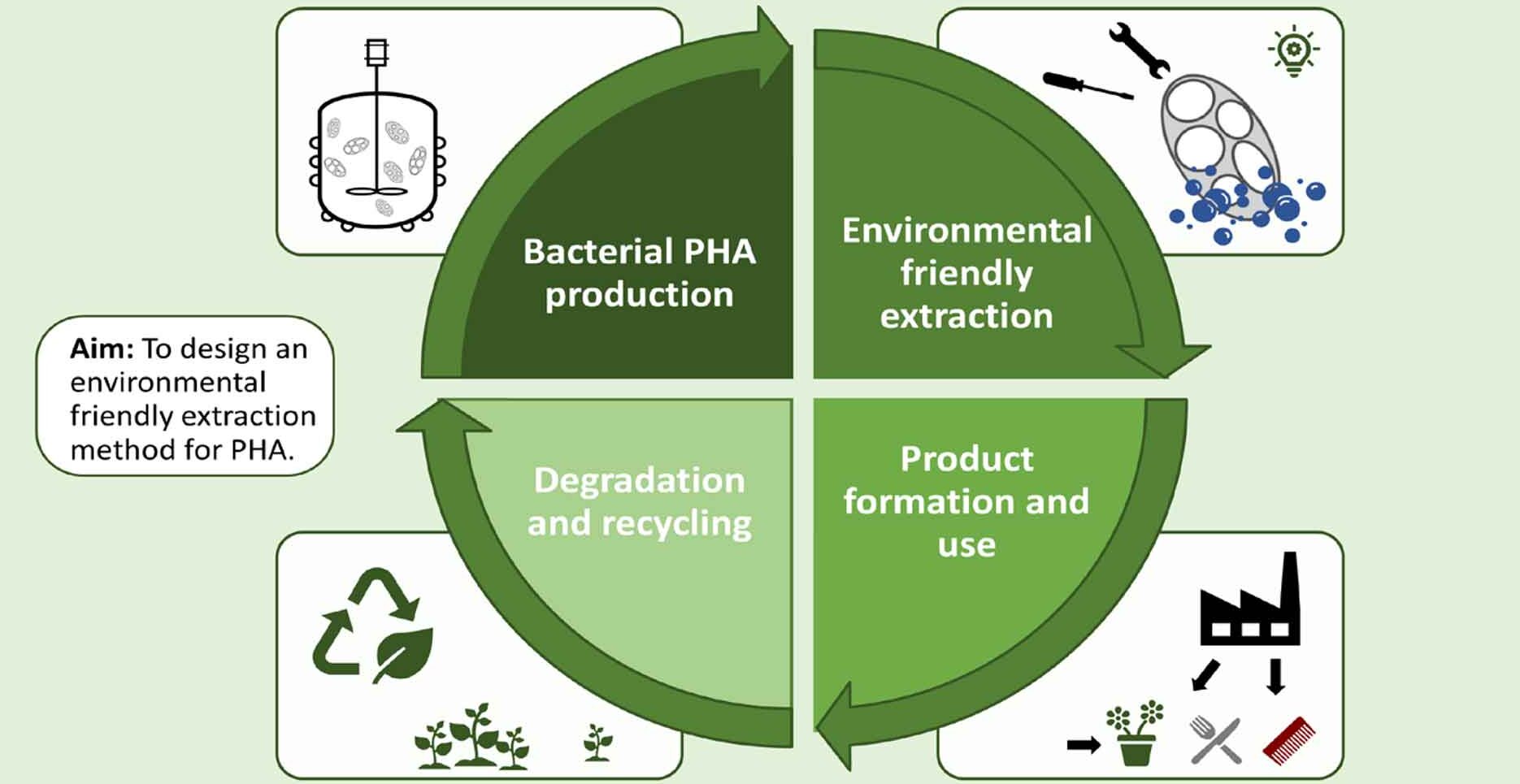Biological degradability is the unique selling point of PHAs”, says Janneke Krooneman, lecturer in Bioconversion and Fermentation Technology at Hanze University Groningen. She was involved in the BERNN project Circular Value Chains for PHA and Cellulose (CBW) as a PHA expert; both through the University of Groningen (RUG) and the Research Centre Biobased Economy of Hanze University Groningen.
“The idea of CBW was to pay attention in all parts of the chain to what you can do with biopolymers, from the raw material, the production to the application”, says Krooneman “That is why companies are involved that have biomass flows, companies that know about the production and processing, and companies that have an interest in processing these polymers in their materials or products. Also, the knowledge institutes affiliated to BERNN complement each other: RUG investigates how certain mechanisms work and how you can exert influence on them, the universities of applied sciences are more concerned with practice-oriented research into extraction, upscaling, machine processing into a product, etc. Each participant in CBW has developed knowledge in their own field of focus.”
Green purification
Some research questions: how do you get PHA of constant quality from heterogeneous raw materials, such as waste water? What is the influence of the raw material composition on the yield? How can the PHA be extracted from the bacterial cells in an environmentally friendly way? “We investigated this on laboratory scale (1-2 litres) and with somewhat larger trials (up to 30 litres) in the Zernike Advanced Processing facility (ZAP Groningen). You can then apply various downstream processing routes, such as purification afterwards. That is not so easy because of the high costs. Follow-up research is still needed in this area.
The follow-up questions that then arise are, for example: is it possible to further optimise the process both in terms of yield and quality of the biopolymer and in terms of production costs? And how pure must the extracted PHA be for various applications?
Hanze University, in cooperation with NHL Stenden, also examined the properties and applicability of PHAs in comparison with biopolymers that are already on the market. A conveniently arranged database has been created from this. “Now it is possible to look up which biological composition is needed when a potential customer is looking for a biopolymer with specific properties, for example melting temperature or flexibility. This is what we will focus on in the follow-up to the CBW project.”
Challenges
It is obvious that there will be a follow-up. The CBW project has produced interesting results which at the same time make it clear where challenges still lie. “We have a better grip on the biology, on how to deal with changing currents. We have also come a long way in terms of the possibilities and impossibilities of water-based extraction and downstream processing. And we have published a number of scientific papers. One of the results that came out of that is how you can aim for a high yield or a quick result. “You start making PHAs from wastewater streams with a whole ‘zoo’ of micro-organisms, but the composition of the wastewater, the production conditions and the time of harvesting determine which organism or group of organisms eventually will be dominant. And that, in turn, determines the quality and maximum achievable yield of the biopolymers. It remains a challenge to condition a heterogeneous bacterial colony to make exactly the desired type of PHA. A possible solution could be to chemically modify the substances afterwards.”
Janneke Krooneman sees one of the biggest benefits of the CBW project as the practical experience gained, with different disciplines at the university and colleges, with the field of work, with potential customers of the biopolymers made, but also with suppliers at the front end of the supply chain. “We got to know many new partners by working together. That is really different from when you meet each other at a network meeting. Because agreeing that you want to visit each other and learn from each other is one thing. Here, we actually did it. As a result, we know what we have to offer and what the other can do, and we can switch more quickly in future projects.
This article was produced in collaboration with Hanze University Groningen.
Image above: Janneke Krooneman at ZAP Groningen/Hanze University




